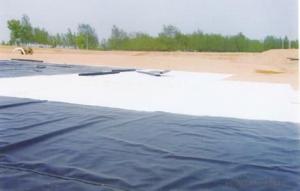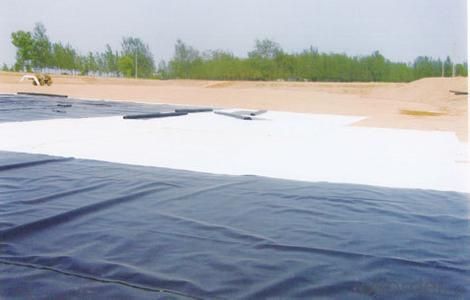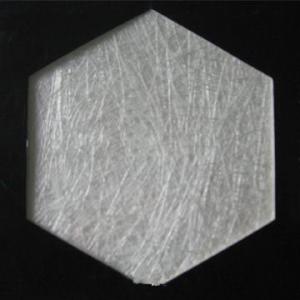Industrial Geotextile Fabric - Geotextiles Anti-Grass Cloth BT20-15
- Loading Port:
- China Main Port
- Payment Terms:
- TT or LC
- Min Order Qty:
- -
- Supply Capability:
- -
OKorder Service Pledge
OKorder Financial Service
You Might Also Like
1.Product Description:
The anti-grass cloth is a kind of vertical and horizontal weaving plastic woven cloth,
It has good quality of permeability,water seepage and Prevention and control of
weeds.Widely used in gardening and agriculture.Most areas in order to control weeds
and prevent the plant roots drill ground Commonly used blow molding of the PE film
as grass cloth.Because of thePE film is transparent,sunlight an through the PE film
sunlight to PE membrane under the weeds,weeds can for photosynthesis, not prevent
weed growth.And the PE film sealing good, poor permeability, water penetration ability is
insufficient, make the plant roots absorbing water ability is insufficient, affect plant growth,
increased permeability is low geothermal could lead to a plant's root rot
2.Product Characteristic:
1.Prevent leakage disposal in landfill or waste water or waste dregs disposing field.
2.River bank ,lake dam ,mine remainings ,resevoir ,tunnel ,liquid storage pool(pit ,mine)
3.Preventing leakage in subway ,basement ,tunnel ,hole .
4.Anti-salt leakage in roadbed and other ground sill.
5.The plane direction laying of dam ,the vertical direction laying for ground sill.used in the
construction fence and waste material field.
6.Used in ground sill of road ,highway ,railway and waterproof layer of welling clay and wet
collapsed loess.
7.Preventing leakage on rooftop.
3.Specifications:
material:pp
.length :50-100m
width:1-8m
BT20-15 BT30-22 BT40-28 BT50-35 BT60-42
Type: Geotextiles
Place of Origin: Shandong, China (Mainland)
Geotextile Type: Woven Geotextiles
Color: black
4.Reference Picture



- Q: How to build a good geotextile sales team
- Any industry needs talent, geotextile sales staff do not need a high degree of education, can work hard on the line, I am specializing in the production of geotechnical materials, wish smooth
- Q: How many meters from the river pipe trench construction using geotextile reinforcement
- River slope protection, etc. can use my professional production of geotextile products. Thank you
- Q: Geotextile cost how much money a flat
- Geotextile laying - including the labor costs (according to geotextile specifications and laying conditions and requirements are different), material costs (specific quality requirements and thickness, are not the same ..), mechanical use costs (such as transport, sewing System, hoisting, etc.). The price is different. Sometimes the construction of our geotextile laying, the price per square meter from 9 yuan to 50 yuan range.
- Q: Can geotextiles be used in tunnel construction?
- Yes, geotextiles can be used in tunnel construction. Geotextiles are often used as reinforcement materials to improve the stability and strength of tunnel walls. They help to prevent soil erosion, control water flow, and provide additional support to the tunnel structure.
- Q: What are the specifications for geotextiles in landfill liner applications?
- The specifications for geotextiles in landfill liner applications typically include properties such as high puncture resistance, tensile strength, and UV stability to ensure durability and longevity. They should also have a high flow rate to allow for proper drainage and prevent the buildup of excess moisture within the landfill. Additionally, the geotextiles should meet specific thickness and weight requirements to provide sufficient barrier and separation functions.
- Q: Can geotextiles be used in green roof systems?
- Yes, geotextiles can be used in green roof systems. They can serve multiple purposes such as providing drainage, filtration, and separation layers. Geotextiles help to control water flow, prevent soil erosion, and promote healthy plant growth in green roofs.
- Q: How are geotextiles manufactured?
- Geotextiles are typically manufactured using a process called needle punching. This involves mechanically interlocking synthetic fibers together to create a strong and durable fabric. The fibers are first carded, meaning they are aligned and separated, before being fed through a machine that punches them with barbed needles. These barbs entangle and interlock the fibers, creating a stable fabric structure. Further processes such as heat setting, calendaring, and coating may be applied to enhance the geotextile's properties, such as increasing its resistance to UV degradation or improving its filtration capabilities.
- Q: Basically I'm thinking of doing a thesis defense on this topic and I want to know if it is any good.
- Any bio-degradable material is not a better substitute for a geotextile material in long run Materials from polymer family may suit better, like Polyamide Polypropylene Polyethylene My answer refers to about having the ability to separate, filter, reinforce, protect, or drain If your purpose of using geotextile material regarding Beach Erosion, Riverbank Erosion, then coconut fibers is a better option
- Q: What are the materials used in geotextile production?
- The materials commonly used in geotextile production include polyester, polypropylene, and polyethylene. These synthetic fibers are chosen for their durability, resistance to environmental factors, and ability to provide strength and stability in various geotechnical applications.
- Q: Can geotextiles be used for reinforcement of road embankments?
- Yes, geotextiles can be used for the reinforcement of road embankments. Geotextiles are commonly employed in road construction and maintenance to enhance the stability and durability of embankments. They provide reinforcement by distributing loads and reducing settlement, while also improving drainage and preventing erosion.
Send your message to us
Industrial Geotextile Fabric - Geotextiles Anti-Grass Cloth BT20-15
- Loading Port:
- China Main Port
- Payment Terms:
- TT or LC
- Min Order Qty:
- -
- Supply Capability:
- -
OKorder Service Pledge
OKorder Financial Service
Similar products
Hot products
Hot Searches
Related keywords



























